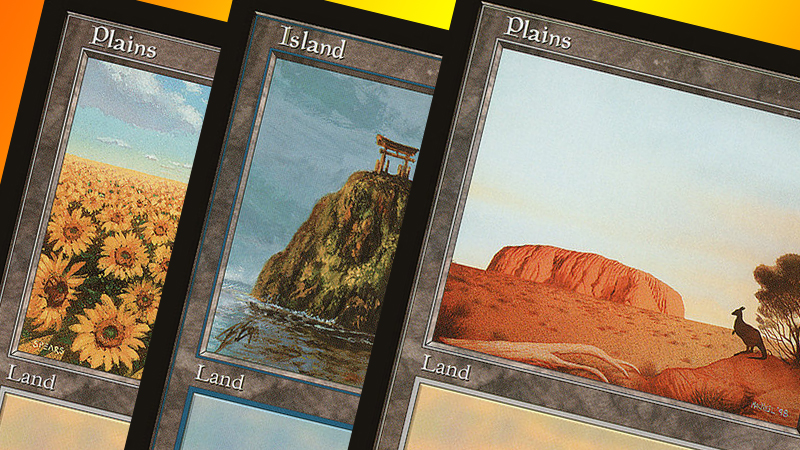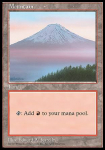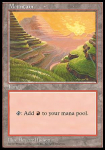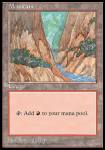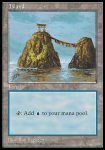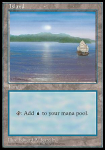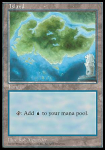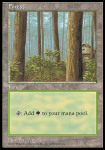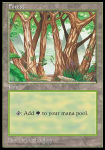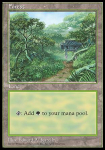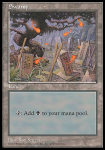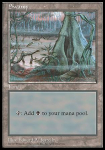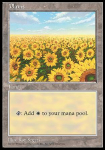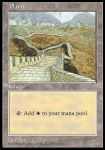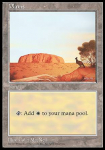Back in 1998, Wizards of the Coast released a special set of basic land cards specifically for the Asian/Pacific market.
Throughout the 1990s, Magic: The Gathering quickly spread throughout the world. After its U.S. debut in August of '93, it quickly hit the rest of North America, with huge jumps throughout Europe in 1995 and digging into Japan and Australia in 1996. But despite finding popularity in Japan (so much so that a special card was made exclusively for the Duelists' Convocation International Tournament Center in Tokyo), the game was having a difficult time gaining traction in other areas of Asia. It was, and remains, a huge market, but a card game that had a basis largely on Western fantasy was largely unrelatable to much of the continent.
Wizards of the Coast needed to find a way to entice players from elsewhere into the game. While an expansion with a more Eastern or Southern Asian focus could help, WotC decided to go a different route. You see, while Magic never really focused on "real life" within its cards before, WotC had a bunch of special land cards planned for release in 1998. In the end, they decided to kill two birds with one stone by tackling their Asian marketing problem while also making a special assortment of land cards.
Throughout the Asian-Pacific marketplace in 1998, a number of special land cards came out based on the cards on actual Asian/Pacific geography to spur regional interest in MTG. Known as Asian-Pacific (APAC) land cards, Japan, Hong Kong, New Zealand, Philippines, Taiwan, China, Australia, Singapore, Indonesia, and South Korea each got representation. While some appeared more generic such as a seemingly non-specific forest, some were also real life places, like Japan's Mt. Fuji filling in for a Mountain card and Meoto Iwo representing a basic Island, as well as Australia's Uluru (a.k.a. Ayers Rock) and China's Great Wall checking in as basic Plains.
The three boosters, wrapped in either red, blue, or clear plastic wrapping, did the trick and were well received both in Asia and in other parts of the world. It showed the Asian markets that, despite Magic: The Gathering heavy Western influences, the game was for them as well. This, along with a bunch of other factors including an entire set being based off of a 14th-century historical novel attributed to Luo Guanzhong titled Romance of the Three Kingdoms, helped expand the game even further in Asia in the coming years.
While there were plenty of APAC cards printed, there were still few enough printed to be counted on as a Magic rarity. As such, the cards can be worth quite a bit (starting at roughly $7.00 and going up from there) considering they're basic lands. In fact, some APAC lands can go for as much as $100 or more depending on which one you're looking to buy.
Even in 1998, a mere five years after the game's debut at GenCon, those behind the game were already trying to make the game as inclusive and relative to a wider, more diverse audience. Of course, the APAC Lands looking pretty sweet doesn't hurt.


